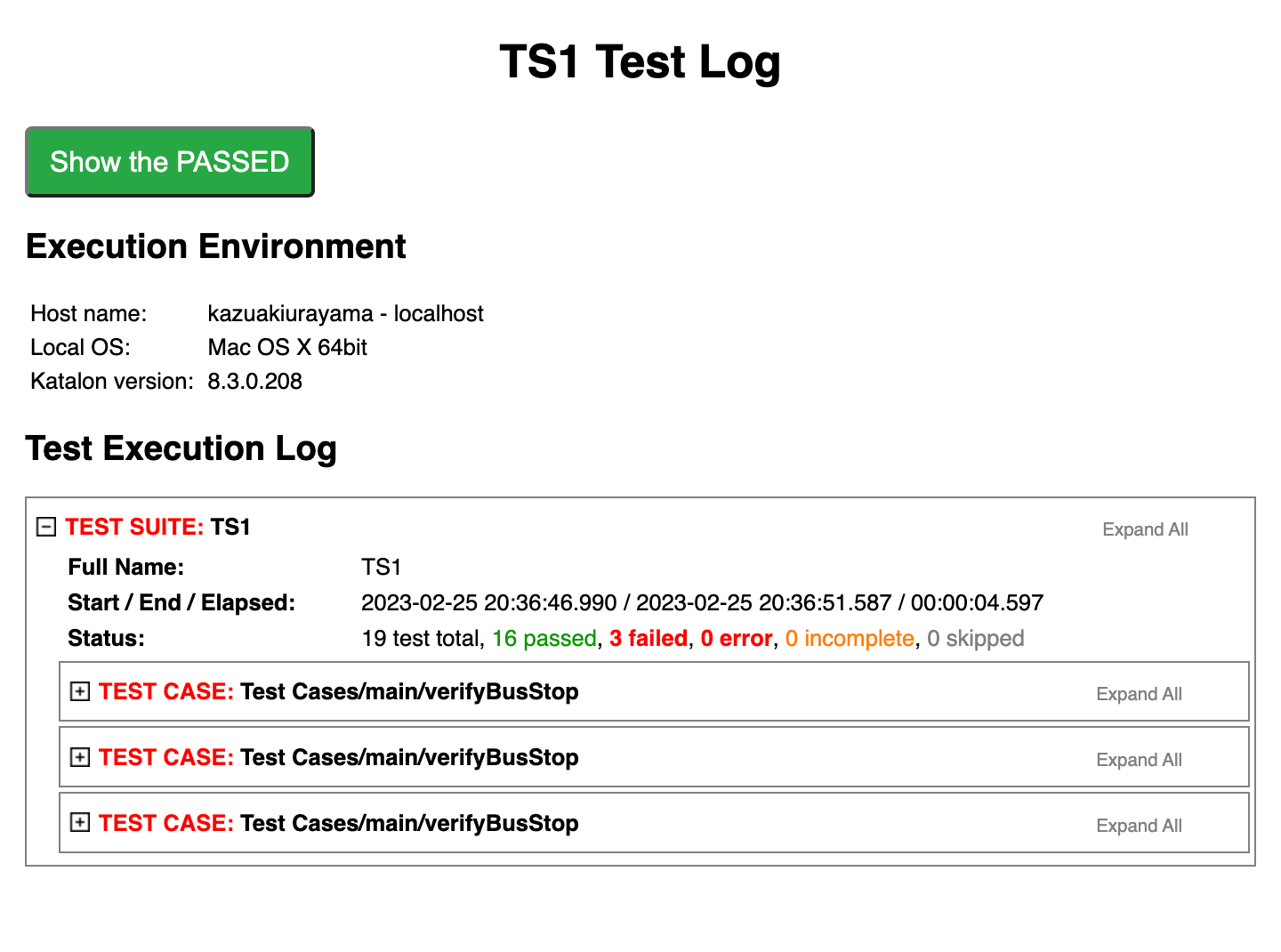+1
The built-in report does not support any filtering at all.
A proposal from me:
I made a Test Suite “TS1”, which comprises 2 Test Cases: “FailingTC” and “PassingTC”:
When I executed the TS1, I got some files in the <projectDir>/Reports folder, as this:
$ tree -h Reports
[ 128] Reports
├── [ 96] 20230222_080435
│ └── [ 96] TS1
│ └── [ 320] 20230222_080435
│ ├── [ 486] 20230222_080435.csv
│ ├── [201K] 20230222_080435.html
│ ├── [8.9K] JUnit_Report.xml
│ ├── [2.7K] execution.properties
│ ├── [ 36] execution.uuid
│ ├── [ 17K] execution0.log
│ ├── [ 206] testCaseBinding
│ └── [ 0] tsc_id.txt
└── [ 96] Self-healing
└── [ 31] broken-test-objects.json
5 directories, 9 files
The execution0.log file will be newly created with size=0 as soon as the TS1 started. TS1 will append logs to the execution0.log file as it goes. When TS1 reached to the end of processing, the execution0.log file will have fully filled. The file will be available to the @AfterTestSuite-annotated method of a Test Listener.
However, all the other files (.csv, .html, .xml) will NOT be there in the Reports folder when the @AfterTestSuite-annoted method of a Test Listener is invoked. These files will be created by Katalon Studio after the TS1 finished and ceased away. The files will only be available to the following processes after the TS1’s run.
There is a CSV file, which containes lines like:
$ cat 20230222_080435.csv
Suite/Test/Step Name,Browser,Description,Tag,Start time,End time,Duration,Status
TS1,,,,2023-02-22 08:04:38,2023-02-22 08:04:39,0.827s,FAILED
,,,,,,,
Test Cases/FailingTC,,,,2023-02-22 08:04:39,2023-02-22 08:04:39,0.204s,FAILED
"markFailed(""I am bad"")",,,,2023-02-22 08:04:39,2023-02-22 08:04:39,0.039s,FAILED
,,,,,,,
Test Cases/PassingTC,,,,2023-02-22 08:04:39,2023-02-22 08:04:39,0.205s,PASSED
"comment(""I am OK"")",,,,2023-02-22 08:04:39,2023-02-22 08:04:39,0.114s,PASSED
It would be easy for you to develop some program that processes this CSV file. You can make the result of “failure only”.
Is this CSV not enough for you? Then you can look at the execution0.log file in which every outcome from the TS1 execution is recored. You can write a reporting program that consumes this file in the way whatever you like.
How do you find this idea (wrote some post-processing programs)? Not satisfactory? ---- Then tell us what you find unsatisfactory. That will tell Katalon team what you want more clearly.
Possibly you have an instance of HTML report, which could be very large, which you are not satified about somehow. Please show it to us and tell how you want to change it. With a concrete requirement, Katalon team might be interested in it.









